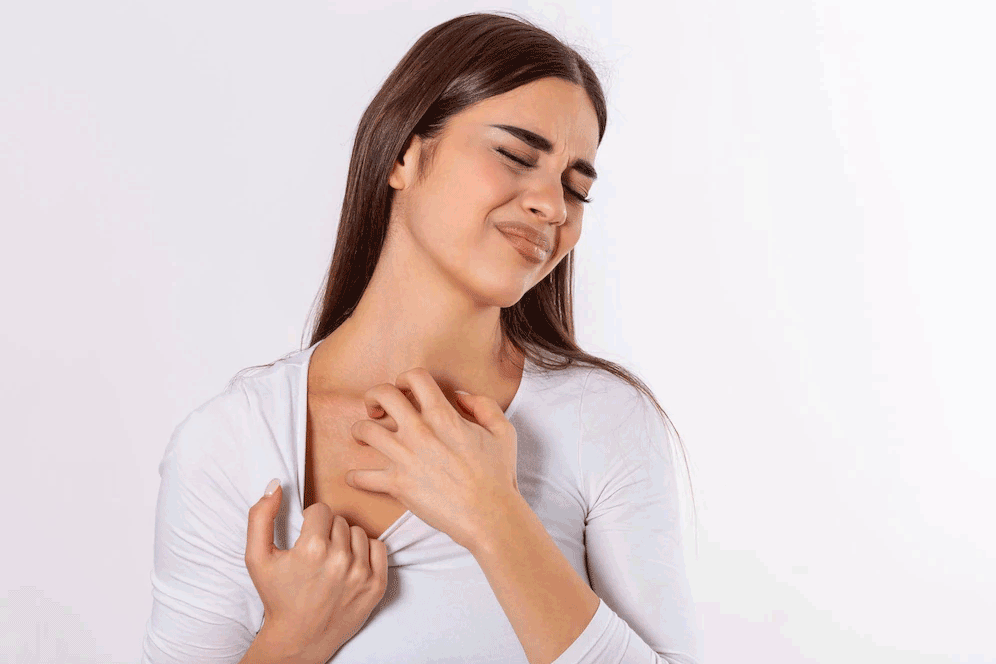Contact Dermatitis

Contact Dermatitis
Contact dermatitis is an allergic reaction due to the contact of something with the skin. Examples of allergic dermatitis include reactions to poison ivy, antibiotics, nickel and other substances. Contact dermatitis can develop right away or it can occur after months of exposure to a substance. Itching and rash are common symptoms of contact dermatitis. We can do tests to determine the source of your reaction.
FAQs about Contact Dermatitis
Here are a few frequently asked questions about contact dermatitis. At Allergy Affiliates, we specialize in treating contact dermatitis.
-
What are the two types of contact dermatitis?
- Irritant contact dermatitis is the most common type. A household cleaner, harsh soap, and industrial solvents can cause it to occur. It can take minutes or hours for your skin to react to these substances.
- In allergic contact dermatitis, the immune system responds to contact with something you are allergic to, such as fragrance, preservative, nickel, and others. The duration of allergic reactions varies from a few days to a few weeks after exposure.
-
What is the method of diagnosing contact dermatitis?
When the eczema isn't responding to treatment, in new cases of eczema, or in chronic cases of eczema whose location, severity, or appearance has changed, contact dermatitis needs to be considered.
In people with atopic dermatitis, contact dermatitis can be especially difficult to detect. Based on your medical history, exposures, symptoms, and patch tests, your health care provider may diagnose you with an irritant or allergic contact dermatitis.
-
What are the symptoms of contact dermatitis?
Symptoms vary depending on the type of contact dermatitis. The signs and symptoms of allergic contact dermatitis include itchy and burning skin, dry, crusty skin, pus-filled blisters, and swelling. When someone has irritant contact dermatitis, they may experience blisters, cracked skin, tight skin, and open sores. Keep in mind that this is a general list of symptoms, and you may experience something different.
Contact Us
Monday: 8AM–5:30PM
Tuesday: 8AM–5:30PM
Wednesday: 8AM–4:30PM
Thursday: 8AM–4:30PM
Friday: 7:30AM–4PM
Saturday: Closed
Sunday: Closed
Monday: 8AM–5:30PM
Tuesday: 8AM–5:30PM
Wednesday: 8AM–4:30PM
Thursday: 8AM–4:30PM
Friday: 7:30AM–4PM
Saturday: Closed
Sunday: Closed
Make an Appointment
Contact Us
We will get back to you as soon as possible.
Please try again later.
Contact Us
Tuesday:
- 9:00 a.m. - 12.30 p.m.
- 2:00 p.m. – 5:30 p.m.
Thursday:
- 8:00 a.m. – 11:30 a.m.
- 1:00 p.m. – 4:30 p.m.
Monday:
- 9:00 a.m. - 12.30 p.m.
- 2:00 p.m. – 5:30 p.m.
Wednesday:
- 8:00 a.m. – 11:30 a.m.
- 1:00 p.m. – 4:30 p.m.
Friday:
- 7:30 a.m. – 11:30 a.m.
- 1:00 p.m. – 4:00 p.m.
Make an Appointment
Contact Us
We will get back to you as soon as possible.
Please try again later.
